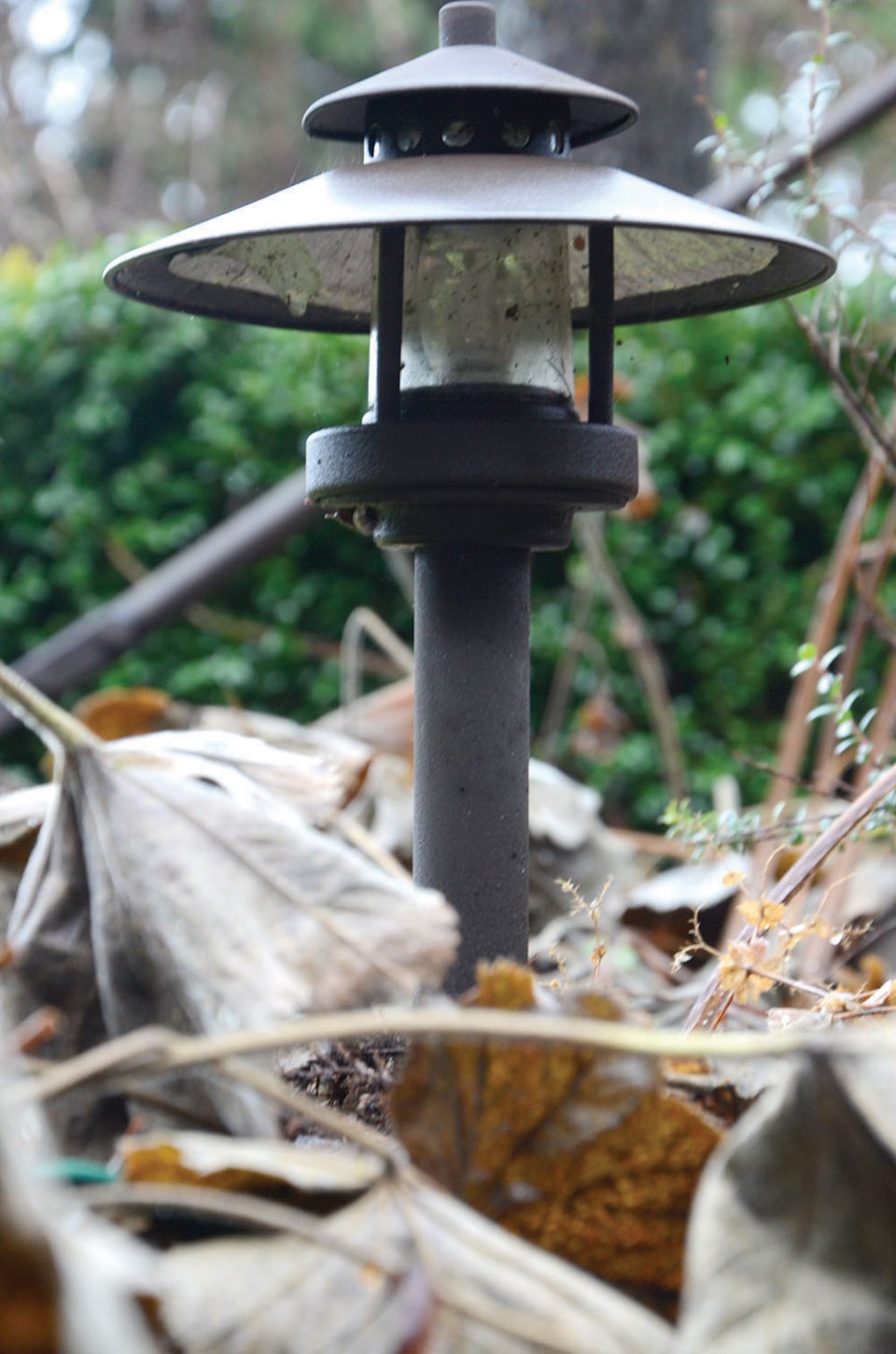The afterglow from Christmas lights is the only thing keeping the darkness at bay during the long nights of January.
If there is any place that needs light to bring out the beauty hidden in the darkness it would be the garden.
If you have never considered a do-it-yourself garden lighting project, you should. Garden lighting is relatively easy to install and prices have slowly gone down in recent years, opening up a range of possibilities for do-ityourself homeowners. DIY garden lighting starts by recognizing that 12-volt systems are the easiest, simplest and most affordable to install versus installing "line voltage" or direct power from the home's main electrical panel.
Do some homework online to choose a lighting product that suits your taste and budget. Garden lighting fixtures range in price from $20 up to a few hundred dollars each.
Lighting fixtures can be made of plastic or metal and from brass or copper, which are the most expensive. Look for a low operating cost for the system you choose. Remember that if the lights run every night the cost will add up over the year.
A 12V garden lighting system consists of a number of light fixtures connected to a main lighting cable which is connected to a transformer that is plugged into an outdoor electrical outlet. The lighting cable is made for outdoor use and can be direct-buried in the garden. It is best to bury lighting cables in places that will not be dug up or disturbed, thereby avoiding cutting the buried cable.
Spaces directly along walkways or along decks and patios are sometimes good locations to bury those cables. As for burying lighting cable out in the wilds of the garden, make a map or remember where you buried the cable so it does not get damaged in the future.
The main power cable is connected to the transformer that reduces house power (120 volt) down to 12 volt for the lights.
Transformer size is determined by counting how many lights you plan to install, adding up their total wattage and then choosing a transformer that is compatible for the total wattage needed by all lights. Transformers are generally water resistant, not waterproof, so place your transformer in as dry a location as possible.
Some transformers are wall mounted which keeps them out of the weather. Other transformers are made for burying in the earth; however, no transformer should be directly buried in the soil unprotected or wrapped in a plastic bag and buried. It is best for safety, maintenance and long-term operation that in-ground transformers be installed inside of a water-resistant box that is filled with clean gravel to keep the transformer dry and clean. Irrigation boxes often work well for burying lighting transformers.
When it comes to choosing the type of light to operate, these days there is simply no comparison between halogen lights and LEDs (light emitting diodes). LEDs are more efficient and cheaper to operate than halogen lights. And with the impending demise of the incandescent light bulb here in Canada, unless you really need the extra power and can afford the extra cost of halogens, LEDs are the way to go. Many of the popular LED garden lighting brands claim their lights will last 50,000 hours or more; some models come with five-to 15-year warranties.
Don't forget the little things needed to install garden lighting like the watertight screw connectors, which attach the light fixture's cable to the main power cable that attaches to the transformer. Most of the good connectors have silicon inside them and you simply cut, prepare and twist the wires together and push them into the watertight screw connectors where the wire is surrounded by silicon, thereby preventing rusting and shorts.
Garden lighting not only brightens up the darkness, it helps with security on very dark properties and provides visitors with a welcomed way to the front door.
Many people say they are not quite sure what they should light up in the garden.
Start by lighting walkways and areas close to the front door. I always recommend lighting trees, shrubs or structures in the garden that can be seen from indoor windows, which maximizes the appreciation of the lighting. Try to create some depth in your lighting layout by lighting up some of the taller trees or their trunks, some low-growing shrubs and a well chosen feature like a statue, bench or other garden element. And pay special attention to outdoor seating areas to provide lighting so guests can see where they are walking and sitting but also so guests can see some of the most attractive features in the garden, which helps to create a sense of place.
Todd Major is a journeyman horticulturist, garden designer and builder, teacher and organic advocate. For advice contact him at stmajor@shaw.ca



